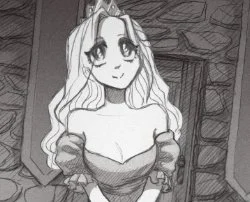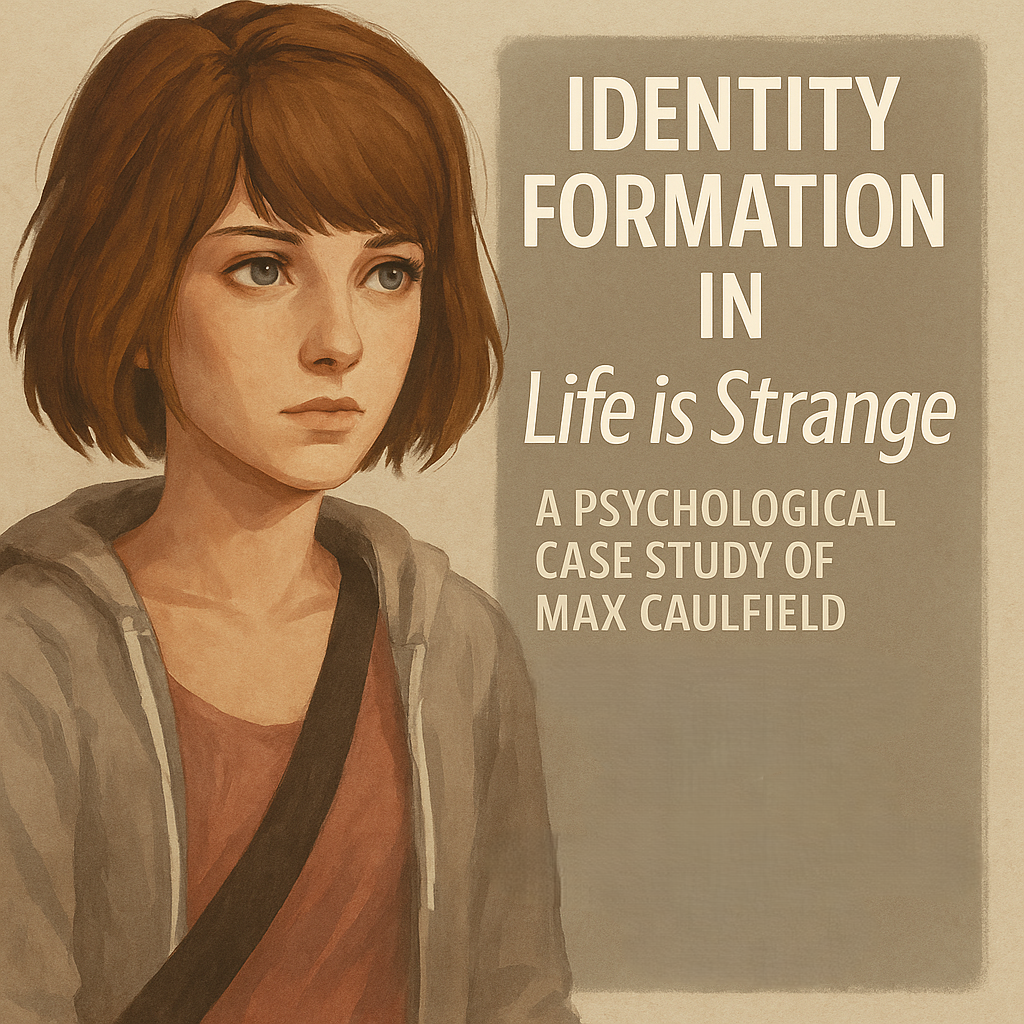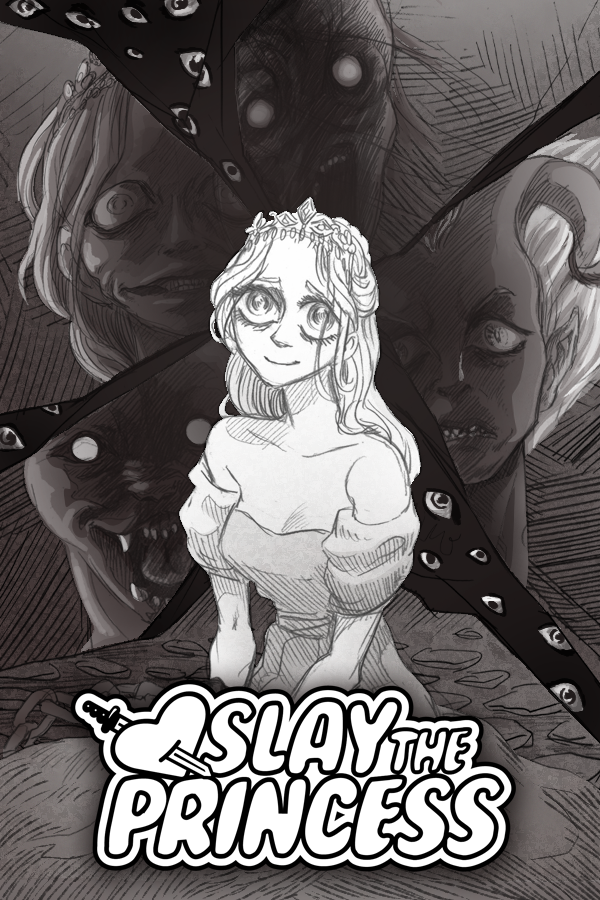Blood and Belonging: How Vampire: The Masquerade Replaces Race with Trauma-Based Subculture
In much of classic fantasy inspired by J.R.R. Tolkien, “race” dictates identity. Elves, dwarves, humans, and orcs are born with inherent physical and moral traits that mark them as distinct peoples. Tolkien sketched these “racial” characteristics so vividly that critics have described his work as “suffused with racialist imagery.” Orcs, for instance, are cast as a wholly evil race and described in grotesque, racialized terms (“squat, broad, flat-nosed, sallow-skinned… degraded and repulsive versions of the least lovely Mongol-types”), directly linking appearance with moral worth. In this tradition, race functions as destiny: species and lineage determine one’s abilities, temperament, and even ethics. Such traits are imagined as immutable, grounded in nature or biology. While these races often serve as allegories for cultures or classes, they are painted in broad strokes of body and blood.
Vampire: The Masquerade (part of White Wolf’s World of Darkness) takes a different approach. All player characters belong to a single species — vampires, the Kindred — who share the same fundamental condition: they are undead predators driven by an immortal thirst for blood and the instinct to survive at any cost. This common vampiric nature is a great leveler. Regardless of their human past, every vampire must wrestle with the Hunger (an inexorable need for blood) and the Beast (the feral, predatory impulse within). Yet within this shared condition, the game introduces clans: factions defined not by biology or outward appearance (with one notorious exception, the Nosferatu) but by psychological tendencies, cultural identities, and social roles. Each clan carries a distinct personality profile, set of powers, and curse that shapes its members’ behavior.
Where traditional fantasy posits innate racial essences rooted in nature, Vampire: The Masquerade imagines identity as forged through nurture — and through the trauma of un-death. The clan you are Embraced into molds who you become in the night, not as a matter of birth but of bloodline and subculture.
This essay will evaluate the clans of Vampire: The Masquerade through psychological and sociological lenses, contrasting them with the fixed racial archetypes of traditional fantasy. In doing so, it will argue that clans function less as biological races and more as cultural or psychological archetypes, enabling a more nuanced exploration of identity, ideology, and the human (or inhuman) condition.
Traditional Fantasy Races: Innate Nature and Allegory
Fantasy literature often relies on different races or species as shorthand for cultural or moral difference. In Tolkien’s Middle-earth, for example, elves are immortal, wise, and close to nature; dwarves are hardy craftsmen; men are versatile but flawed; orcs are brutish and corrupt. These distinctions are presented as inborn, fixed traits determined by birth. A dwarf cannot simply choose not to be stubborn, nor can an orc escape its “evil” nature.
Such portrayals draw on deep folkloric roots, but they also carry social allegories. Tolkien himself admitted parallels between his Dwarves and Jewish people, citing linguistic and cultural inspirations. At the same time, his orcs were described in language reflecting the ethnic stereotypes of his era. Although Tolkien opposed racism personally, his framework of races with fixed essences has often echoed real-world notions of racial determinism, which modern critics and authors increasingly challenge.
In classic fantasy, these differences are tied above all to biology and appearance: pointed ears, short stature, or dark skin. Physical traits symbolize deeper assumptions about intellect, temperament, and morality. Races become caricatures of human groups, such as dwarves as stubborn grudge-holders or elves as ethereal sages. These qualities are portrayed as innate and unchangeable. An elf raised among dwarves remains elvish in grace and longevity, and an orc rarely transcends its brutality. Fantasy has therefore built much of its diversity on racial essentialism, the belief that each race has an essence that defines it.
From a sociological perspective, this amounts to projecting cultural or moral difference onto biology, an outlook aligned with outdated racial theories. The result is powerful, mythic storytelling of light versus dark or fair versus foul, but it risks oversimplifying entire peoples and reinforcing ideas of otherness.
In short, traditional fantasy races function as fixed archetypes rooted in body and blood. They enrich world-building but at the cost of portraying culture and personality as pre-determined by birth. It is against this backdrop that Vampire: The Masquerade offers a strikingly different model: one where all characters share a single species, the vampire, and the real differences emerge not from biology but from what happens after the transformative trauma of the Embrace.
The Kindred Condition: A Shared Nature of Vampirism
All vampires in the World of Darkness share a core experience that can be understood as a species-wide condition. Regardless of clan, certain truths hold:
They are undead, sustained by blood and unable to survive without it.
They cannot endure sunlight and possess an unnatural immortality coupled with fear of fire and daylight.
They must grapple with the Beast, a primal psyche of hunger and rage that can drive them into frenzy.
They live within a hidden society, enforcing the Masquerade to conceal their existence from mortals while navigating predator-prey dynamics with both humans and fellow vampires.
This shared condition produces a psychological profile common to all Kindred: an existence defined by predation, secrecy, paranoia, and constant tension between lingering human morals and new vampiric urges. The need for self-preservation is heightened, for every night is a struggle to balance humanity against monstrosity. No matter how cultured or gentle they once were, each vampire must confront the fact that survival now requires feeding on others.
Crucially, this condition is acquired rather than innate. No one is born a vampire; any human, regardless of origin, can be Embraced and thereby transformed. The Embrace is a moment of psychological and physiological rebirth that alters the fledgling both physically and spiritually. Beyond the universal traits of vampirism, the bloodline of the sire imprints a set of powers and a curse that shape the new vampire. These clan-specific inheritances can manifest as quirks of personality, flaws of temperament, or physical alterations that mark the individual.
Here the interplay of nature and nurture becomes central. The “nature” side lies in the mystical blood itself, which grants each clan its characteristic abilities and limitations. The “nurture” side lies in the culture that follows. A fledgling is usually guided by their sire and drawn into the expectations, traditions, and philosophies of the clan. Unlike fantasy races where culture is inherited at birth, a vampire undergoes sudden and often jarring cultural assimilation after rebirth. A nineteenth-century Parisian poet might awaken as a Brujah and be thrust into a community of anarchist rebels, while a modern gang member could be Embraced by a Ventrue and pressured into the role of an aristocratic power broker. These identities are not natural inheritances but transformations imposed through blood and social context.
Psychologically, this makes identity within the vampire world fluid. Some changes are involuntary, such as clan curses that affect stability or appearance, but much depends on how the individual adapts. The classic nature versus nurture debate acquires a unique dimension here. A vampire’s biology has been rewritten by curse and bloodline, yet their consciousness remains intact, struggling to integrate the change. Scholars of human behavior emphasize the constant feedback loop between nature and nurture, and this dynamic is vividly present among the Kindred. A Nosferatu, for instance, inherits grotesque deformities that force them into isolation. That isolation then encourages habits of secrecy and spying, reinforcing the stereotype of the clan. Conversely, a vampire’s human background can either harmonize with or resist clan culture. A gentle soul Embraced into the violent Brujah clan faces dissonance between their former identity and the passions inflamed by their blood.
In sum, all Kindred share a single species identity and its universal challenges, but the clan system overlays a secondary identity that is not determined by birth or appearance. It is shaped instead by who sires them, by the supernatural inheritance of the clan, and by the cultural norms they internalize afterward. This design makes the World of Darkness a compelling space for psychological and sociological storytelling. One species fractures into subcultures defined not by biology but by shared ideology, curse, and tradition, with one notable exception that complicates the picture.
A Glimpse into the Clans
Brujah: The Rebel’s Fire
The Brujah illustrate what Erikson called an identity crisis, frozen into eternity. In life, young adults move through rebellion as a stage on the path to maturity. But when the Embrace locks a Brujah into that cycle, rebellion becomes not a phase but a personality anchor. Psychologically, this is identity foreclosure: adopting the Rebel as a permanent self-definition. The repeated exposure to conflict also mirrors the dynamics of complex trauma: constant arousal, constant scanning for threats, until the body no longer remembers how to rest. The Jungian Warrior here is not simply noble but compulsive, chasing fight after fight because peace feels alien. In effect, the clan turns trauma into culture.
Malkavian: The Window with a Crack
Malkavians embody what psychiatry calls double stigma — marginalized for both their condition and for the social response to it. Their “madness” is not uniform; it interacts with prior personality, trauma history, and social rejection. A Malkavian once trained in psychiatry might turn their curse into a therapeutic tool, while another, abandoned by sire and mocked by peers, spirals into dangerous self-fulfilling prophecy. The “Cobweb” functions like a supernatural metaphor for dissociation and intrusive thoughts, forcing them into perpetual identity negotiation. Jung’s Trickster and Sage are entwined, but modern psychology adds nuance: their derangement can be read as post-traumatic growth, where suffering generates insight. But the line between gift and wound is thin, and stigma ensures that every moment of lucidity is shadowed by suspicion.
Nosferatu: The City’s Understory
Nosferatu’s curse is a textbook case of stigma shaping identity. Erving Goffman described how disfiguring traits provoke society to exclude and force the stigmatized to create compensatory cultures. The Nosferatu community is precisely this: a subculture formed not by choice, but by the trauma of forced exile. Their transformation at Embrace is a literal body horror trauma, akin to sudden acquired disfigurement or disability, which disrupts continuity of identity. Many respond with resilience, reframing monstrosity as honesty. Others weaponize secrets to gain the power their faces deny them. In Jungian terms they are the Shadow made flesh, but sociology helps us see how that Shadow becomes a site of solidarity, a collective identity formed in opposition to beauty’s tyranny.
Toreador: The Hunger for Feeling
The Toreador embody what psychologists describe as hedonic adaptation: the diminishing emotional returns from repeated exposure to pleasure. Eternity dulls sensation, so their obsession with beauty is a maladaptive attempt to restore a lost intensity. Their curse — paralysis in the face of art — is addiction rephrased: compulsion that overrides survival. This produces fragile identities, constantly reconstructed around the next muse or performance. Jung situates them as the Lover/Creator, but trauma theory adds depth: the trauma of emotional numbness creates a compulsive overcompensation. In sociological terms, they live in a performative identity loop where self-worth depends on audience approval, mirroring the cycles of celebrity culture.
Tremere: The Price of Certainty
The Tremere dramatize role engulfment, where identity is consumed by institutional expectations. A neonate quickly learns that individuality is dangerous; survival demands assimilation into the clan’s rigid hierarchy. The Embrace becomes less a rebirth than an indoctrination trauma: freedom is stripped away by binding oaths and magical compulsion. Jung calls them the Magician, but psychology frames them as case studies in authoritarian personality development: ambition and paranoia nurtured within an environment that rewards obedience and punishes dissent. Their tragic paradox is that mastery of blood sorcery brings not liberation but deeper captivity.
Ventrue: The Weight of the Crown
Ventrue illustrate how social identity theory functions among the undead. Leadership is not simply individual talent; it is legitimized through group consensus and ritual. The Ventrue identity is carefully nurtured through mentoring, etiquette, and selective Embrace — essentially a form of elite social reproduction. Traumatic stress also plays a role: ruling means managing crises nightly, cultivating what psychologists call compassion fatigue. Jung’s Ruler archetype is here weighted with the pathology of entitlement, but also with the cost of emotional suppression demanded by command. They are monarchs who must police not only others, but themselves, until control becomes the only way to live.
Gangrel: The Country Beyond the Walls
The Gangrel experience identity through liminality, existing between civilization and wilderness. Anthropologists note that liminal figures often destabilize categories; Gangrel reject Elysium politics, yet remain vampires all the same. Their curse — taking on beast traits after frenzy — literalizes behavioral embodiment, where repeated reactions inscribe identity onto the body. This is trauma’s physicalization: loss of control etches itself into form. Jung places them with the Wild One and Explorer, but psychology highlights post-traumatic resilience: survival strategies that value autonomy, adaptability, and honesty. The cost is isolation, but the reward is freedom from the illusions that bind other clans.
Discussion: Nature, Nurture, and the Sociology of Clans
Analyzing the clans shows how Vampire: The Masquerade frames identity as a balance between nature and nurture. Unlike orcs and elves, vampire clans are not biological races. They function more like cultures or extended families that one joins through the supernatural rebirth of the Embrace. There is a “nature” component, since bloodlines carry curses and aptitudes, but these traits are subtle influences rather than fixed destinies. The more decisive factor is how each vampire internalizes their clan’s ethos and how others treat them once they belong. In sociological terms, this is a process of resocialization: the individual undergoes a redefinition of self, comparable to entering a monastery, a military unit, or a gang, where new values and survival strategies must be learned.
What makes this compelling is that clans embody archetypal figures of the monstrous psyche—the raging beast, the mad prophet, the tyrant king, the decadent sensualist—yet these roles are not foregone conclusions. They are paths shaped by choice, circumstance, and family influence. For example, a Toreador embraced from humble origins as an art teacher might resist becoming a socialite at first. Over time, however, the clan’s pursuit of pleasure, the constant praise for style, and the intoxicating effects of supernatural presence can gradually reshape them into the very diva they once rejected. Their blood did not force them to be shallow. Instead, the social environment rewarded and normalized vanity. In psychological terms, this resembles how humans adapt to subcultures: people tend to become what their peer group values. For the Kindred, eternal life and mystical curses intensify that process.
Clan identity can also be read as a metaphor for human social identities that are not tied to ethnicity. Two people of the same background might end up in radically different communities, such as one joining a strict religious sect and the other joining a biker gang. Their “clans” in this sense would determine dress, behavior, and values despite shared genetics. Vampire: The Masquerade literalizes this idea within a horror setting. The Ventrue and Nosferatu live such different lives that they seem like separate species, one hosting elegant salons, the other surviving in tunnels. Yet the true barrier between them is culture and stigma, not biology.
Another striking feature is how clans treat members who do not fit the stereotype. Traditional fantasy rarely explores such exceptions, presenting the compassionate orc or cowardly dwarf as rare anomalies. In contrast, Vampire: The Masquerade explicitly encourages players to experiment with atypical characters, such as a scholarly Brujah or a Malkavian who is eerily lucid. These figures remain defined in relation to clan norms, much like a straightedge punk is notable because most punks are not. The clan is a broad framework, not a straitjacket, which mirrors how real subcultures tolerate deviance while reinforcing majority norms.
Clans also demonstrate in-group and out-group dynamics. Vampires as a whole form one large in-group against humanity, their prey, but within that unity they fracture into subgroups that often harbor rivalries and prejudices. Brujah distrust Ventrue due to histories of oppression. Tremere and Tzimisce carry on ancient conflicts. Toreador and Nosferatu clash because their values of beauty diverge so sharply. These hostilities are not innate. They are learned through stories, traditions, and mentorship. The parallels to human society are clear: classes, professions, or communities often develop stereotypes about one another that persist across generations. The game’s focus on moral choice and personal horror invites players to question or resist these inherited biases. If all vampires share the same cursed condition, why do they remain divided? The answer lies in a deeper truth: beings still crave belonging, and belonging often depends on defining others as outsiders.
Clans can also be understood as archetypes of human society rather than allegories of ethnicity. Ventrue embody rulers, Tremere scholars, Malkavians prophets, Nosferatu outcasts, Brujah rebels, Toreador artists, and Gangrel nomads. In Jungian terms, each represents a facet of the collective psyche, amplified by immortality and curse. This design allows the game to explore themes such as madness, power, lust, and alienation in ways that resonate with real psychological struggles. It avoids the determinism of race, where morality is inscribed in biology, and instead offers a different kind of determinism: the mark of trauma and the weight of power. The Embrace is itself a trauma, and each clan’s curse is like an indelible scar of that experience. Powers and privileges then shape ethical choices, often leading to corruption.
In this way, clans serve as both mirrors and amplifiers of the human condition. They dramatize how identity can be molded by social environment, trauma, and ideology, while reminding us that belonging always comes with pressure to conform.
Simply Put
Vampire: The Masquerade offers a striking case study in how identity can be constructed, deconstructed, and reconstructed through forces other than biology. All vampires share the same species and the same dark hungers, yet the division into clans defined by mental and cultural traits produces a tapestry of identities that feel recognizably human. In doing so, the game reverses the model of traditional fantasy. Where classic fantasy insists that “different peoples are born different,” Vampire suggests that people become different—through circumstance, choice, and curse. The clans are a metaphor for how humans form tribes around ideas, values, and shared trauma. They remind us that even if external markers vanished, divisions would persist, drawn instead from philosophy, desire, or experience.
Viewed critically, this design reveals a high level of self-awareness. It allows Vampire: The Masquerade to address issues such as prejudice, mental illness, authority and rebellion, tradition and change, and the alienation of the Other, all within the framework of a supernatural drama. Crucially, these conflicts unfold along personal and ideological lines rather than racial ones. This fosters more individualistic stories. A Brujah character is not angry by default; they carry personal reasons for their rage and must navigate a clan history that interprets anger in specific ways. That legacy is not written into their DNA but conferred in the moment of Embrace.
In academic terms, Vampire emphasizes a form of social constructionism. Vampires are made, not born, and the clans represent identities collectively constructed and reinforced through stories, behaviors, and supernatural inheritance. Yet the blood itself cannot be dismissed. It imposes limits and tendencies that no vampire can entirely escape. The result is a nuanced model: identity emerges from a dialogue between nature and nurture, where neither side has the final word.
From a sociological and psychological perspective, the clans invite reflection on our own world. Cultures, subcultures, social classes, and chosen communities shape identity in ways just as powerful as genetics. In the World of Darkness, all vampires share fangs and immortality, but it is mindset, ethos, and moral compass that separate one clan from another. Each clan is a mirror held up to humanity’s fragmented soul, showing that the line between monstrous and human is drawn not by biology but by the stories we tell about who we are. Unlike the static races of Tolkien’s legendarium, the clans of Vampire remind us that identity is never fixed. It is a narrative, and like all narratives, it can be rewritten, resisted, or surrendered to—across the endless nights of eternity.
References
Bandura, A. (1977). Social learning theory. Englewood Cliffs, NJ: Prentice Hall.
Erikson, E. H. (1968). Identity: Youth and crisis. New York, NY: W. W. Norton.
Goffman, E. (1963). Stigma: Notes on the management of spoiled identity. Prentice-Hall.
Mead, G. H. (1934). Mind, self, and society. Chicago, IL: University of Chicago Press.
Skinner, B. F. (1953). Science and human behavior. New York, NY: Macmillan.
Sources
Clans of Vampire The Masquerade - Paradox Interactive
Dev Diary #10: Developing Tremere - Paradox Interactive












Examine how Cyberpunk 2077 redefines identity theft in the context of consciousness transfer, exploring the deep psychological implications of losing control over one's self in a digital era.